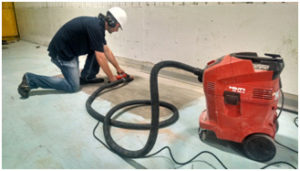When renovating your existing facility or even building a new facility altogether, there are so many questions you will ask yourself; “What should my first step be?”, “What should my budget be?” and finally, “how will I pay for this?”
Like everything in life you have to plan the work and then work the plan. Recently I was a part of a Design Conference held for Veterinarians and Practice Owners that addressed all of these questions and so many more. The information gathered was invaluable and I highly recommend finding and attending a Design Conference if at all possible. I’d say the most valuable piece of advice was to retain the services of an architect, this is the first step. A good architect (I call them Veterinarian Architects) with experience in designing Veterinary facilities can save you so much time and money and do all of the research on materials and site development (not to mention the permitting through the municipalities) while you’re doing what you should be doing, treating your patients. A Veterinarian Architect will consult with you on your current practice demands and future demands, your wants and needs and help you plan your square footage requirements, then give you a true estimate (per square foot) on what type of budget you’ll need to accommodate the things you’ve asked for. A couple of architecture firms even partner with construction firms so the building process goes off without a hitch. I’ll make some recommendations on architects with specific veterinary design experience at the end here. A “Veterinarian Architect” will save you time and money, but one architect is developing a way to make you money. Wayne Usiak (BDA Architecture) speaks at national veterinary conferences and is an editorial contributor to Veterinary Economics and he’s working on a method that will allow his firm to calculate which areas of a clinic earn the money and which areas do not, then design a floor plan that is conducive to profitability. Another item to discuss with your architect is your exit strategy? When you’re ready to retire, how attractive is your facility going to be to potential buyers? If you’re purchasing land to build a new clinic on, you may consider setting up a personal LLC corporation to own the land and your new clinic can pay rent to the LLC. This way even after you retire, you’ll still get those monthly rental payments to help pay your greens fees! How will you pay for the expansion? Obtaining the lending can be tricky too so it’s important to seek out lenders who understand that a Veterinarian runs a unique business so the lender has to think outside of the box. Bank of America has a veterinary financing division that has had a lot of success in meeting the specific, unique needs of practice owners looking to grow. The veterinary financing division of Bank of America is not available at your local branch and many branches don’t even know it exists, you can find the link to their site below. Remodeling is an exciting yet challenging time, utilizing a team of experts to execute your vision will give you all the advantages and help you avoid the pitfalls.
BDA Architecture – www.bdaarc.com
Chapel Associates Architects – www.chapelarchitects.com
Bank of America Veterinary Financing – http://www.bankofamerica.com/small_business/practicesolutions/index.cfm


